Ciro-flex TLR shutter strip down and service
A couple of weeks ago I picked up a nice Ciro-flex Twin Lens Reflex camera from eBay for a few pounds which was described as needing a little bit of work. One of the issues described was that the aperture blades were a bit stiff to adjust, and when I received the camera I discovered (as I suspected) that the aperture blades needed to be cleaned up to remove some old grease and dirt which was sticking them together. This post describes how I got the shutter off the Ciro-flex TLR camera and cleaned up both the aperture and, since I needed to completely dismantle it to get the aperture, the shutter as well.
Ciro-flex TLR strip down pictures
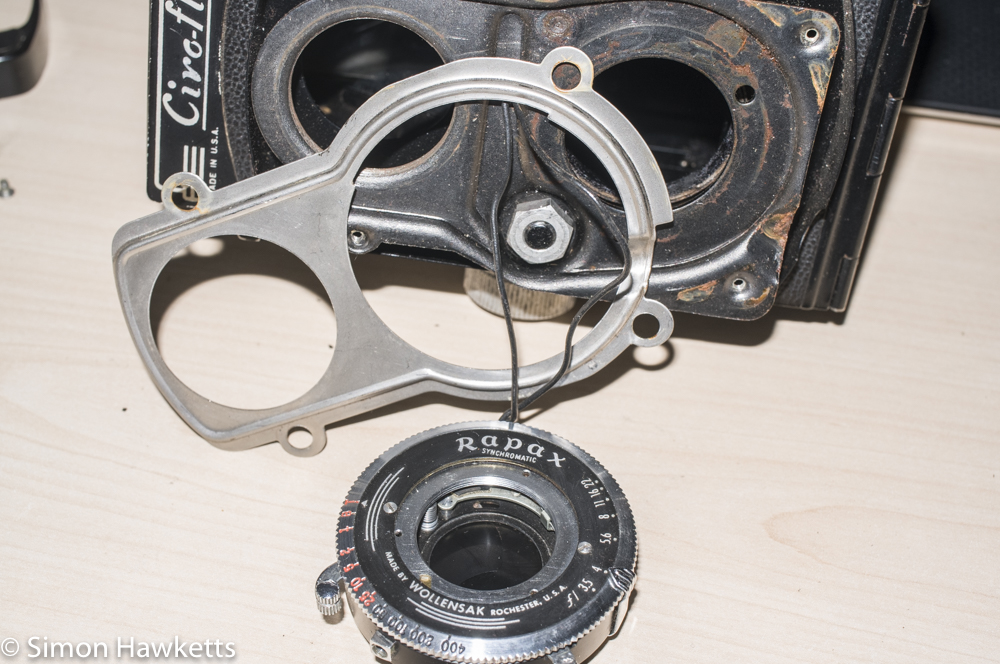





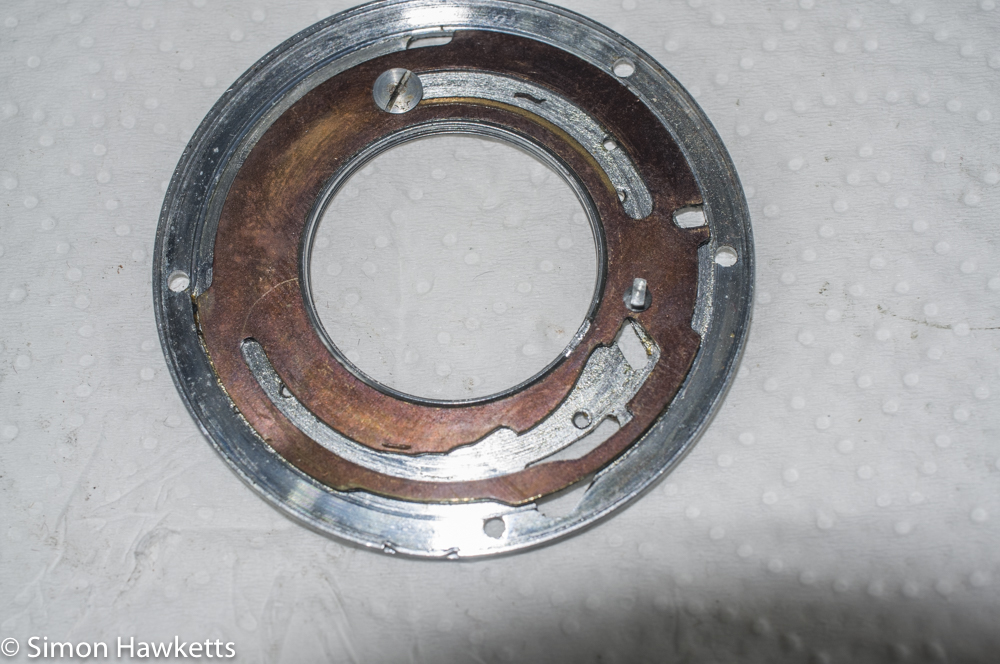














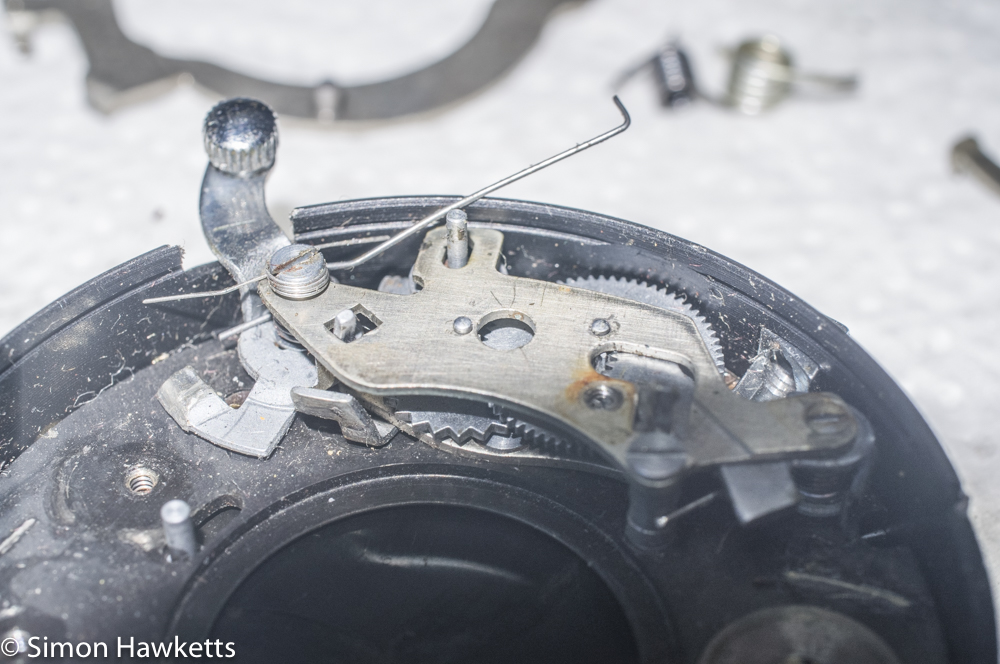















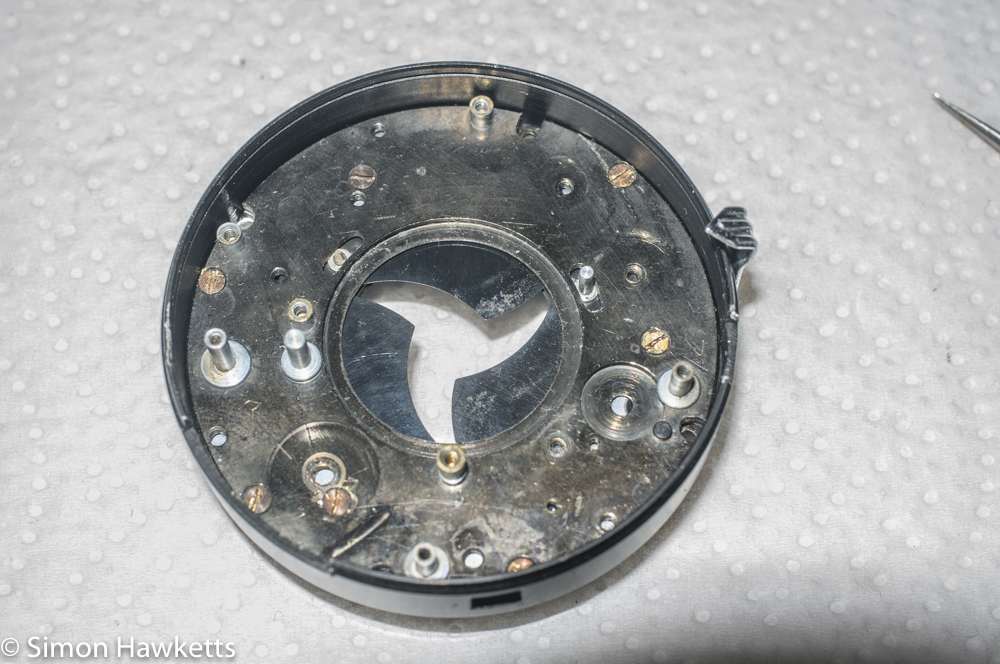





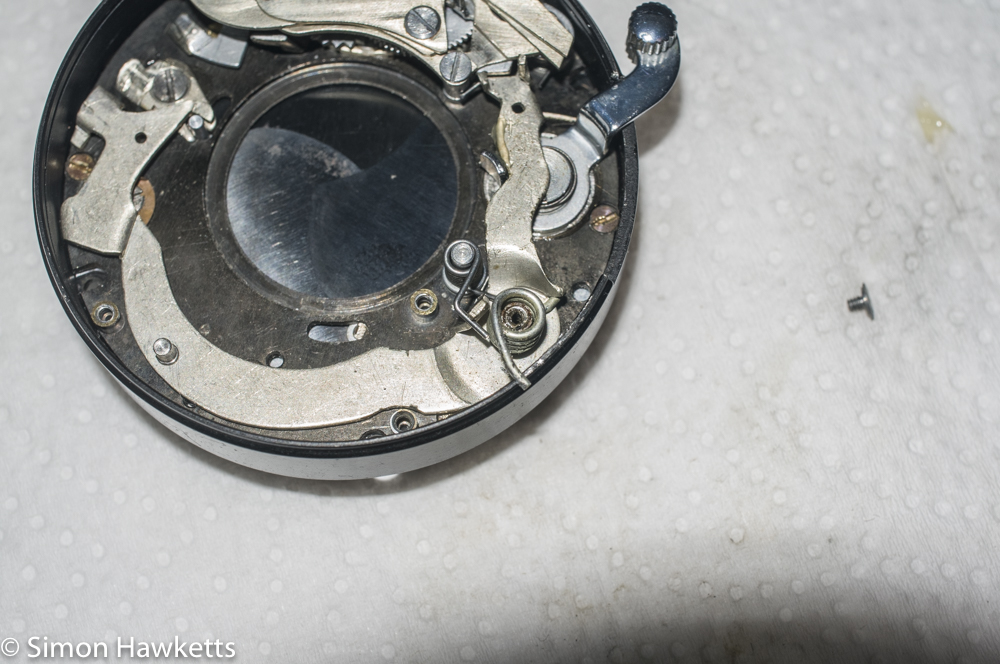



Dismantling the Ciro-flex TLR
The pictures above show the procedure I used to get the Ciro-flex TLR shutter apart. First, I’ll apologise for the quality of some of the pictures – they are taken as I carry out the work and sometimes the focus isn’t perfect, and I don’t discover it until after I’ve finished the work. Oddly, I don’t normally feel like taking everything apart to take a missing picture!
It is a simple job getting the lens off the camera – there is a locking ring on the back of the shutter which is removed with a lens spanner and the shutter pulls out of the front of the camera. There are a couple of sync leads on the shutter which have to be pulled through and unsoldered, and to do this the covering needs to be removed from the front of the camera to remove the screws and the front plate.
With the shutter off the camera it was a relatively simple job to strip the shutter down, as I said above the pictures have most of the detail. The things to be particularly careful about are
- The front and rear lens elements will unscrew from the shutter, so these should be removed and placed somewhere safe.
- Make sure you know which screws are used for which purpose – I normally have a sheet of white paper and lay the parts in groups with the screws which are used for that part.
- When you take the top plate off the shutter, one of the main bolts which hold the plate on is shorter than the other three – make a note of where it goes or refer to the pictures above.
- There are two main springs fitted to a pillar on the main cocking arm. These springs are pretty powerful and can easily fly off and be lost, so make sure you have your hand over the shutter as you remove them.
- Make sure you clean all the pieces with solvent to get rid of all the old grease and dirt before you re-assemble the shutter. I normally do this just as I re-assemble each part.
- When you rebuild the escapement, there is a pin on the larger gear which fits in a slot on the retard gear arm. You need to push the retard arm as far as it will go, so it meets the side of the shutter, and then get the pin to fit into the slot. You then need to fit the escapement plate on as you hold the arm in position.
Repairing the shutter blades
When I got the shutter bottom plate out of the shutter I found that as I thought the aperture blades were completely gummed up and really difficult to move. Unfortunately, the design of the blades in this camera is a bit weak, because instead of having a pin in the end of the blade it has a hole punched through with ‘walls’ which form the pin. The problem with this is if the blades are stiff and the aperture is adjusted, the walls can get flattened, and the blades get out of sequence. That is what happened to my camera. One positive of the design however is that fact that one end of the blade is permanently fixed to the plate, so it’s much easier to get the blades in the correct position for re-assembly – swing’s and roundabouts I guess.
The first thing I needed to do was remove the old oil and grease which were sticking the blades together. I did this with IPA and lots of cotton buds. After a lot of careful cleaning, the blades were able to move freely. I then used a drop of Teflon surface protector over the surface of the backplate and left it to dry overnight. This dry lubricates the surface and seems to work well with aperture blade assemblies.
At first, I re-assembled just the aperture blades and tried it out, but although it was much easier to move, there was still a tendency for the blades to get out of sequence and one or two to stick. So I took it apart again and had the idea of trying to rebuild the ‘wall’ around each of the holes by pushing a cocktail stick through each hole. This time when I put the aperture back together I was pleased that it all worked properly and stayed as a perfect O shape at all settings. If I needed to do this again I would probably find something better than a cocktail stick because being wooden the sharp edges of the ‘wall’ stuck into the stick making it difficult to remove. Something like a tapered metal punch might do a better job.
Ciro-flex TLR Re-assembly
To get the shutter back together is really a question of doing everything you did to take it apart in reverse, taking note of the assembly of the retard gear, as I said above.
Although the shutter was working well when I took it apart, I did make sure everything had been properly cleaned before I put it all together and used a tiny amount of new grease in the places where metal moves against metal (although not on the escapement cogs). I also cleaned the shutter blades and used some Brasso to polish them because they have some rust and water stains on them. As long as you are careful not to bend the blades, and you remove all the polish, it leaves them really clean.
With the shutter re-assembled, I pleased that the speeds are all right, and the aperture blades are silky smooth to operate. Once I get the shutter back into the Ciro-Flex I will try a film through it.
Discover more from Everything Vintage
Subscribe to get the latest posts sent to your email.



